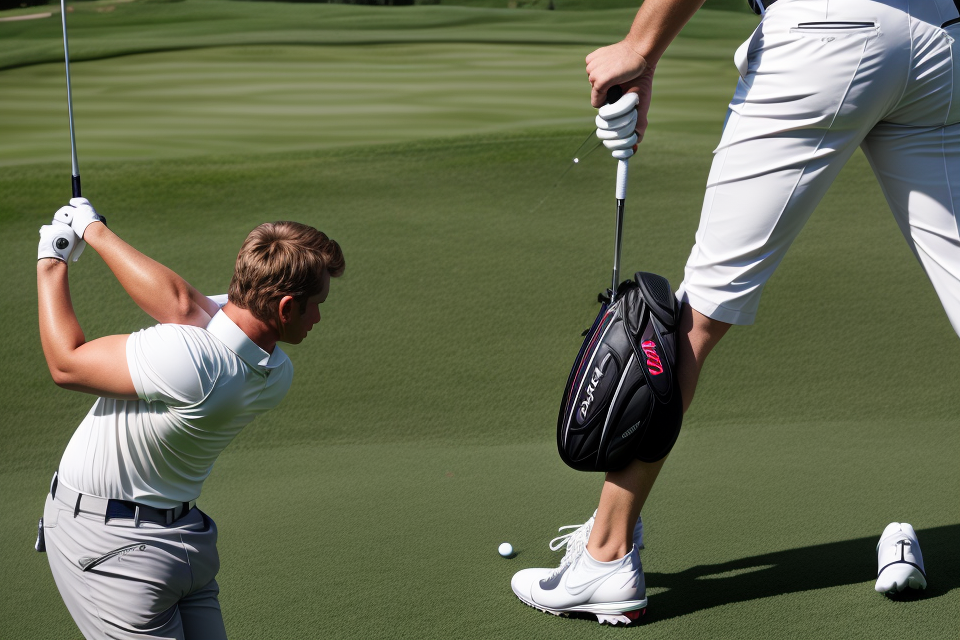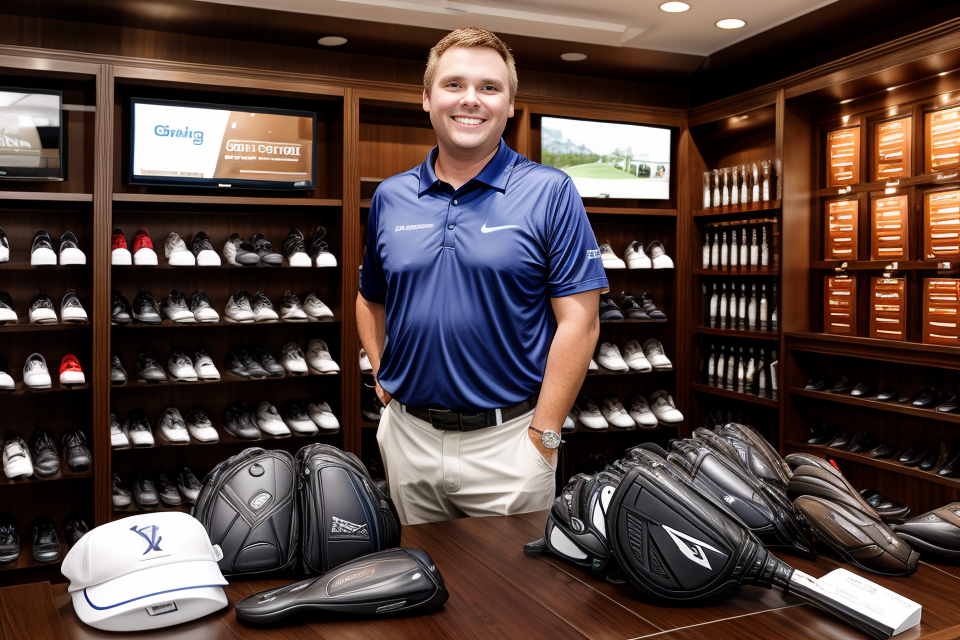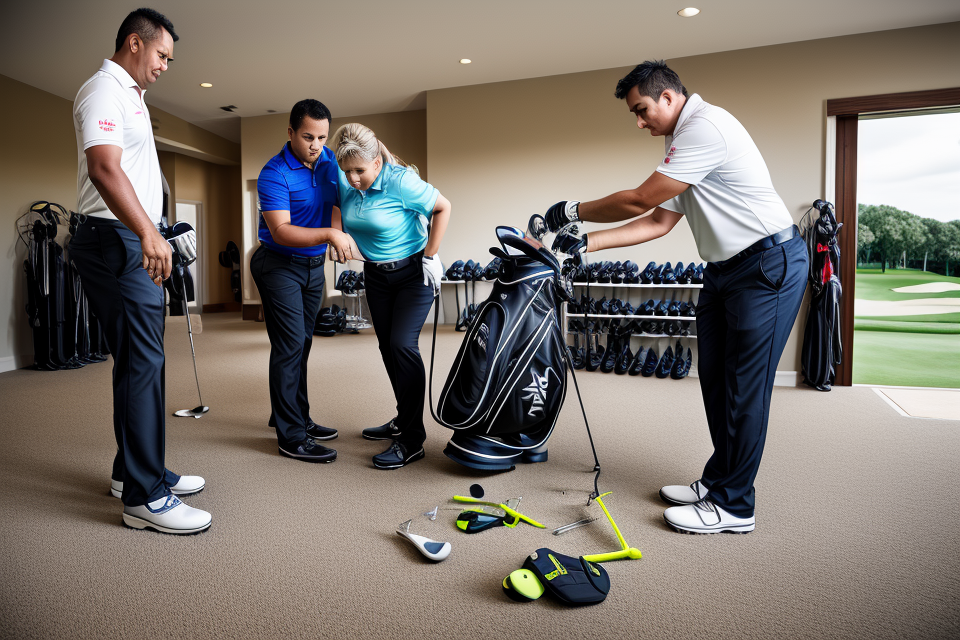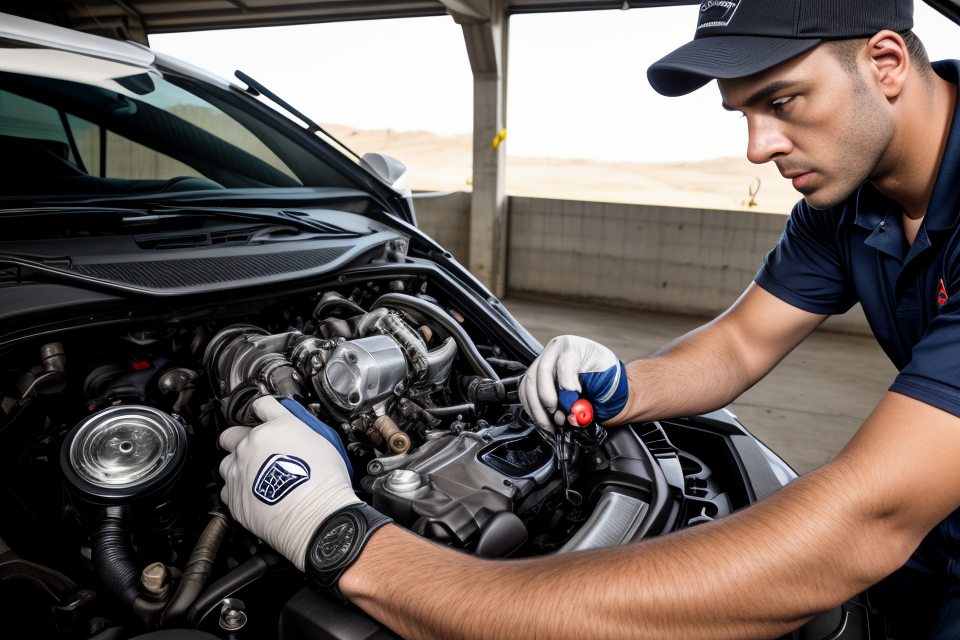
Golf club fitting is a crucial aspect of improving one’s golf game. It involves adjusting the various components of a golf club, such as the shaft, grip, and clubhead, to optimize its performance for an individual golfer. By customizing the club to the golfer’s physical attributes and swing characteristics, it is possible to improve the ball flight and achieve more accurate and consistent shots. In this article, we will explore how golf club fitting can impact ball flight and discuss the benefits of personalized club fitting for golfers of all skill levels. Whether you’re a seasoned pro or a beginner, understanding the importance of golf club fitting can help you take your game to the next level.
Golf club fitting can have a significant impact on ball flight. The right club fitting can help improve accuracy, distance, and overall ball flight. A properly fitted golf club ensures that the clubhead is in the correct position at impact, which can help maximize the power and control of the shot. A poorly fitted club, on the other hand, can lead to mishits and a loss of distance and accuracy. Additionally, a golf club that is not fitted to the player’s swing can cause physical strain and increase the risk of injury. Therefore, it is important for golfers to have their clubs fitted by a professional to ensure that they are using the best equipment for their game.
The importance of golf club fitting
- Golf club fitting is the process of customizing golf clubs to a player’s individual physical characteristics and playing style.
- This can include adjusting the length, flex, and torque of the shaft, as well as the loft and lie angle of the clubhead.
- Proper golf club fitting can improve accuracy and distance, as well as reduce the risk of injury.
- It is important to note that a poorly fitted golf club can lead to decreased performance and increased risk of injury.
- Therefore, golf club fitting is an essential aspect of the game for golfers of all skill levels.
Factors affecting ball flight
=================================
When it comes to understanding how golf club fitting impacts ball flight, it’s important to consider the various factors that can affect the trajectory and distance of a golf shot. These factors include:
- Swing mechanics: The mechanics of a golfer’s swing can have a significant impact on ball flight. For example, a golfer with a slow swing speed may benefit from a more flexible shaft to promote a higher ball flight, while a golfer with a fast swing speed may prefer a stiffer shaft to maintain control and promote a lower ball flight.
- Ball speed: The speed at which a golfer strikes the ball can also impact ball flight. A golfer with a higher ball speed may benefit from a lower lofted club to promote a lower ball flight, while a golfer with a lower ball speed may prefer a higher lofted club to promote a higher ball flight.
- Spin rate: The amount of spin placed on the ball during impact can also affect ball flight. A golfer with a higher spin rate may benefit from a lower lofted club to promote a lower ball flight, while a golfer with a lower spin rate may prefer a higher lofted club to promote a higher ball flight.
- Launch angle: The angle at which the ball is struck in relation to the ground can also impact ball flight. A golfer who strikes the ball with a higher launch angle may benefit from a lower lofted club to promote a lower ball flight, while a golfer who strikes the ball with a lower launch angle may prefer a higher lofted club to promote a higher ball flight.
Overall, these factors can all impact how a golfer’s ball flight is affected by their golf club setup. By taking into account each golfer’s unique swing mechanics, ball speed, spin rate, and launch angle, a custom golf club fitting can help optimize a golfer’s ball flight and improve their overall performance on the course.
Understanding the impact of club length and shaft flex
Club length and shaft flex are two crucial factors that can significantly impact a golfer’s ball flight. In this section, we will discuss the importance of understanding the proper length for height and swing type, as well as the effect of shaft flex on ball flight.
Proper length for height and swing type
One of the most critical factors in golf club fitting is ensuring that the golfer has the right length of club for their height and swing type. The right length of club can help the golfer achieve the proper trajectory and spin rate on their shots, leading to better control and accuracy.
For taller golfers, it is essential to have a longer club length to help them reach the ball more easily. Conversely, shorter golfers may benefit from a shorter club length to help them control their shots more effectively. The length of the club should also be adjusted based on the golfer’s swing type, with faster swingers benefiting from a slightly shorter club length and slower swingers benefiting from a slightly longer club length.
Shaft flex and its effect on ball flight
Shaft flex is another critical factor to consider when fitting a golfer with a club. The flex of the shaft can affect the ball flight in several ways, including the trajectory, spin rate, and distance of the shot.
A stiffer shaft will generally result in a lower trajectory and less spin, which can be beneficial for golfers who tend to slice the ball. On the other hand, a more flexible shaft will result in a higher trajectory and more spin, which can be beneficial for golfers who tend to hook the ball.
Adjusting for optimal performance
In order to achieve optimal performance on the golf course, it is essential to adjust the club length and shaft flex to the golfer’s specific needs. A professional golf club fitter can help the golfer determine the right length and flex for their clubs based on their height, swing type, and playing style.
By adjusting the club length and shaft flex, golfers can improve their ball flight, increase their accuracy, and achieve greater distance on their shots. It is essential to work with a professional fitter to ensure that the clubs are properly fitted to the golfer’s specific needs, as even small adjustments can have a significant impact on the golfer’s performance on the course.
Adjusting the loft and lie of the club
Understanding loft and its impact on ball flight
In golf, the angle at which the club strikes the ball is crucial to achieving the desired ball flight. The loft of the club refers to the angle between the clubface and the shaft when the club is in its address position. This angle is responsible for controlling the trajectory and distance of the ball flight. A higher loft angle results in a higher trajectory and shorter distance, while a lower loft angle produces a lower trajectory and longer distance.
Customizing the loft for individual swings
Each golfer has a unique swing, and therefore, a unique ball flight. A proper golf club fitting can help customize the loft of the club to match the golfer’s swing, resulting in improved accuracy and distance control. For example, a golfer with a steep downswing may benefit from a higher loft angle to help maintain a more consistent ball flight. Conversely, a golfer with a shallow downswing may require a lower loft angle to achieve a more penetrating ball flight.
Lie angle adjustments for improved performance
The lie angle of the club refers to the angle between the shaft and the ground when the club is in its address position. A proper lie angle is essential for achieving optimal ball flight and control. If the lie angle is too flat or too upright, it can lead to inconsistent ball striking and reduced control over the ball flight. A golf club fitting can help adjust the lie angle to match the golfer’s swing, resulting in improved accuracy and consistency. For example, a golfer with a steep swing plane may require a flatter lie angle to help maintain control over the ball flight, while a golfer with a shallow swing plane may benefit from a more upright lie angle to help promote a consistent ball flight.
The role of grip size and style
Choosing the right grip size is a crucial aspect of golf club fitting as it can significantly impact ball flight. The grip size should be chosen based on the golfer’s hand size and strength, as well as the club’s shaft size and flexibility. A grip that is too small or too large can lead to reduced control and accuracy, resulting in poor ball flight.
In addition to grip size, the style of the grip can also affect ball flight. A flared or upright grip can increase spin and lift, resulting in a higher ball flight, while a neutral or flat grip can promote a lower, straighter ball flight.
Adjusting the grip is another important aspect of optimizing ball flight. Golfers may need to adjust their grip size or style depending on the conditions of the course, such as the wind or the type of turf. By adjusting the grip, golfers can fine-tune their ball flight and improve their overall performance.
The impact of clubhead design and materials
When it comes to golf club fitting, the design and materials of the clubhead play a crucial role in determining the ball flight. The shape, size, and weight of the clubhead can all impact the ball’s trajectory and spin rate. Here are some key factors to consider when it comes to clubhead design and materials:
Different clubhead designs and their effects
There are several different clubhead designs available, each with its own unique characteristics. For example, a shallow-faced clubhead may be more forgiving on off-center hits, while a deep-faced clubhead may offer more control for skilled players. A square-toed clubhead may produce a draw bias, while a closed or open-toed clubhead may produce a fade or hook bias, respectively.
Choosing the right materials for your swing
The materials used in the construction of the clubhead can also impact ball flight. For example, a heavier clubhead may produce more distance, while a lighter clubhead may offer more control. The type of metal used in the clubhead can also impact the ball flight, with some metals being more dense and producing more ball speed.
Customizing the clubhead for improved performance
In addition to choosing the right clubhead design and materials, golfers can also customize their clubheads to improve performance. This may include adjusting the loft, adding or removing weight, or even changing the color of the clubhead to improve visibility. By customizing their clubheads, golfers can optimize their ball flight and improve their overall performance on the course.
FAQs
1. What is golf club fitting?
Golf club fitting is the process of selecting and adjusting golf clubs to fit the physical characteristics and playing style of the golfer. It involves analyzing the golfer’s swing, body type, and preferences to determine the optimal club length, shaft flex, and other specifications.
2. How does golf club fitting impact ball flight?
Golf club fitting can significantly impact ball flight by ensuring that the golfer is using clubs that are well-suited to their swing and physical characteristics. When a golfer uses clubs that are too long or too short, or that do not match their swing speed and tempo, it can result in inconsistent ball flight, slices, hooks, and other errors. By selecting clubs that are tailored to their needs, golfers can improve their accuracy and distance control, resulting in more consistent and accurate ball flight.
3. What factors are considered during golf club fitting?
During golf club fitting, several factors are considered, including the golfer’s height, weight, and swing speed, as well as their preferred swing style and ball flight. Other factors, such as the golfer’s hand size and grip strength, may also be taken into account. The fitter may also analyze the golfer’s current equipment and compare it to their needs and preferences to determine whether any adjustments are necessary.
4. How often should golf club fitting be done?
Golf club fitting should be done whenever a golfer experiences a significant change in their physical characteristics or playing style. This could include changes in height, weight, or swing speed, as well as changes in the golfer’s preferences or goals. It is also recommended to have golf club fitting done periodically to ensure that the golfer is using the most up-to-date and effective equipment.
5. Is golf club fitting expensive?
The cost of golf club fitting can vary depending on the location, the fitter, and the extent of the fitting process. Some golf shops and clubs offer basic fitting services for free, while more comprehensive fitting sessions can cost several hundred dollars. However, the investment in golf club fitting can pay off in the long run by improving the golfer’s performance and reducing the need for frequent equipment upgrades.


